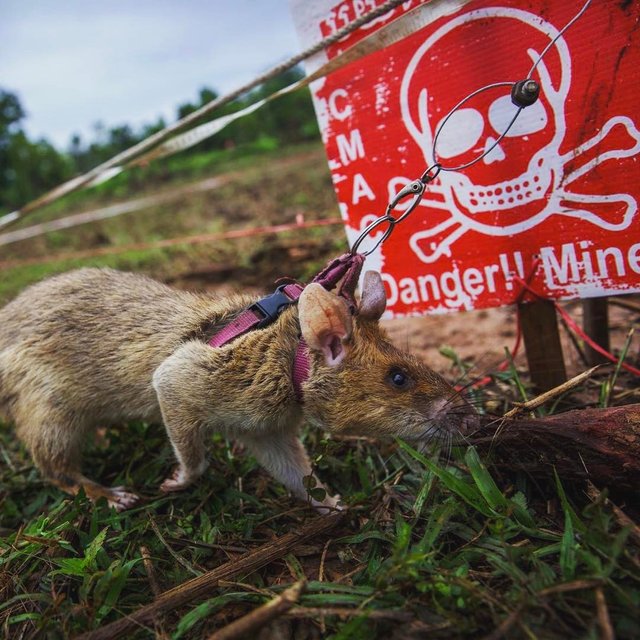In Cambodia, there are approximately 6 million landmines that have not been found. This is a major problem as each year many people unwittingly stumble upon these and are seriously injured or killed. For decades people have been searching for the mines themselves, using instruments like metal detectors. This certainly puts them at a major risk too, and besides that, the metal detectors don't come with a 'Landmines Only' function, so they detect everything from tin cans to old coins. But a Belgian company called APOPO has found a far safer and more precise way of detecting landmines - by training rats to sniff out TNT!
APOPO was founded in 1997 by Belgian national Bart Weetjens. APOPO is an acronym for Anti-Persoonsmijnen Ontmijnende Product Ontwikkeling or Anti-Personnel Landmines Removal Product Development in English. The idea came to Bart due to his experience of playing with his pet rats as a child and he knew that rats, with their strong sense of smell and trainability, could provide a cheaper, more efficient, and locally available means to detect landmines. The specific type of rats they use are the Southern giant pouched rat, which is native to Africa. These rats are huge, about the size of a domestic cat. They have poor eyesight but their sense of smell is far superior to other rat species, and they are also easy to train. They are nicknamed 'HeroRats' by APOPO. The video below gives a brief description of how the rats detect the landmines:
Video Credit
And they can do more than landmines, they are able to detect tuberculosis in humans too!!!
Yes, APOPO has also trained these rats to detect TB. Due to their unique speed and sensitivity, the APOPO TB detection rats significantly increase the detection rate of people with tuberculosis. APOPO has raised the number of TB-positive patients found by over 40% in the clinics where it works. Patients with suspected tuberculosis leave sputum samples at their local clinic to be checked by conventional microscopy. In some developing countries this method identifies less than half of the actual TB-positive patients! HeroRATs hover over suspect-TB samples for 3 seconds. If it is a TB-positive ‘control’ sample, the rat receives a reward. This keeps them accurate and eager to find tuberculosis in all the samples.


Thank you for this valuable information, I did not know this. How clever!!
Downvoting a post can decrease pending rewards and make it less visible. Common reasons:
Submit
How interesting is the new knowledge we learn in this community.
Thanks for the info!
Downvoting a post can decrease pending rewards and make it less visible. Common reasons:
Submit
Congratulations @ollie7! You received a personal award!
You can view your badges on your Steem Board and compare to others on the Steem Ranking
Vote for @Steemitboard as a witness to get one more award and increased upvotes!
Downvoting a post can decrease pending rewards and make it less visible. Common reasons:
Submit